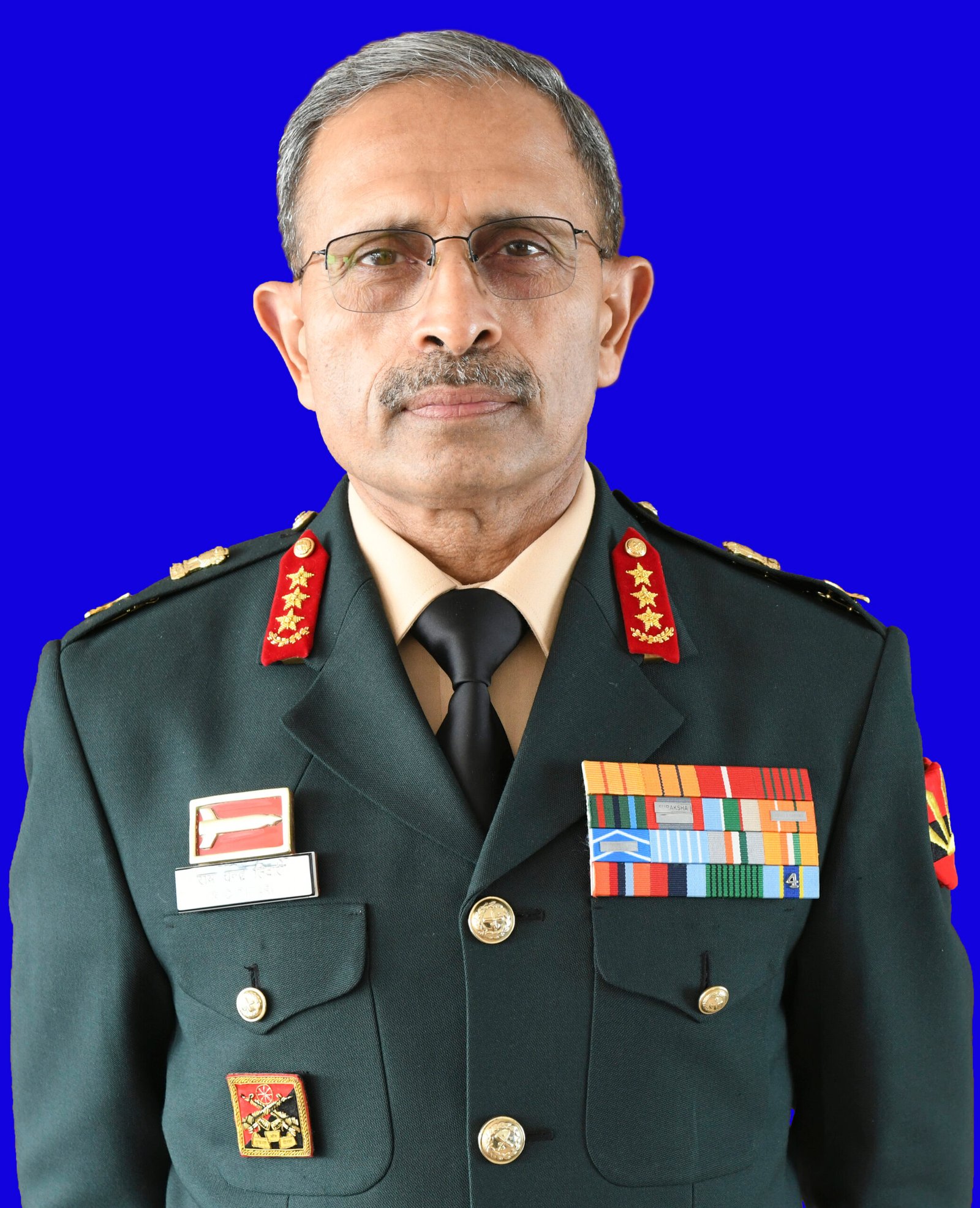Current Events :











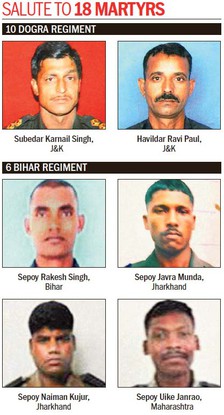
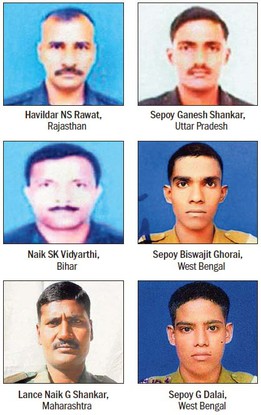
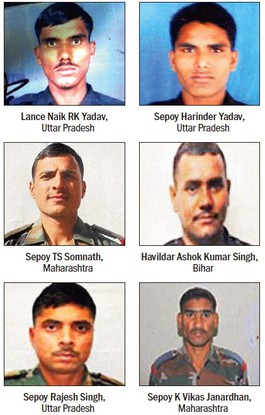
Ajay Banerjee
Tribune News Service
New Delhi, September 19
An initial internal assessment by the Northern Command identified five core lapses that could have led to the terrorist attack.Top sources confirmed that killing of 18 personnel was not possible without lapses in following the standard operating procedures at locations close to the Line of Control.Firstly, militants crossed the double barbed wire fence, supposed to be patrolled 24×7. Secondly, they breached the perimeter fencing of the military camp.Thirdly, soldiers who were part of an advance party of the 6 Bihar Regiment were not staying inside a built-up area which was available, but putting up in tents in the open.Fourthly, the tents were too close to the fuel dump of the Uri brigade. Fifthly, ample men were not on guard duty or only a few had weapons in ready-to-fire mode.The Army assessment accepted that the initial burst usually had some casualties. But, it was inexplicable to lose 14 men when tents caught fire after grenades were lobbed.Of the 18 deaths, 14 occurred due to fire in the tents. Those who escaped the fire were gunned down.It was being suspected that the terrorists hid inside the military camp for a few hours before launching the attack and were aware of the personnel putting up in tents.”Having seen the Army closely, I feel, it needs to be analysed as to what happened there…It needs to be investigated how the incident took place and what were the lacunas… from the Army’s side, alertness is required. The Kashmir situation needs to be thought about. Action has to be taken without getting influenced by emotions, anger. It has to be taken coolly and with proper planning.” V K Singh, Union Minister and former Army Chief “One has to accept that the situation today is worse than what was during the Congress regime. At a time when pro-Pakistan sloganeering is on in Jammu and Kashmir and Pakistan flags are being hoisted there, the Centre should dissolve the state government and impose ‘martial law’ there as President’s (Governor’s) rule wouldn’t suffice.” Shiv Sena in “Saamana” Editorial
Sons of Havildar Ravi Paul who was martyred in Sunday”s terrorist attack at Uri Army camp, at their native village, Sarwa in Samba on Monday. PTI
Samba (J&K), September 19Ten-year-old Vansh, the eldest of the two sons of Havildar Ravi Paul Salotra, is aware that his father was martyred in the Uri terror attack but that has only strengthened his resolve to don the olive greens to serve the nation and avenge the killing.Ravi Paul of 10 Dogra Regiment was one of the 18 brave soldiers who lost their lives while fighting the four terrorists who attacked the Army Brigade Headquarters in Uri sector of Baramulla district yesterday.
(Follow The Tribune on Facebook; and Twitter @thetribunechd)
He had served the army for 23 years.Besides Vansh, 42-year-old Ravi Paul is survived by his wife Geeta Rani and another son Sudansheesh (7) and 80-year old mother.Because of Ravi Paul’s death, a pall of gloom has descended on his native Sarwa village in Ramgarh sub-sector of Samba district.“My father used to call early in the morning. Yesterday, he called us and we spoke in length on various issues. He asked me to concentrate on my studies so that I could fulfil his dream of becoming a doctor in the Indian Army,” said Vansh, a class 6th student.When asked whether he was aware of what tragedy has befallen on the family, Vansh, carrying two plastic tricolours, said his father laid down his life for the sanctity of the national flag.”Yes I know that my father laid down his life for the Tricolour and I will fulfil his dream of becoming a doctor in the Army so as to avenge the killing of my father,” he said.Ravi Paul’s two brothers have also served in the Army.In this sleepy Sarwa village of over 120 families, there are many who have donned the olive green uniform at one stage of their life.“Majority of the people in our village are either serving in the Army or have served at one stage of their life. Out of six brothers, my three brothers were in Army and Ravi Paul was the youngest to join the Army,” said Joginder Lal Salotra, elder brother of Ravi Paul.He described Ravi Paul as a very jolly and friendly person who used to mingle with everybody in the village.“Whenever he used to come on leave, people used to meet him as he always narrated the stories about his tenure in the Army,” Lal said.He said Ravi Paul used to make sure that he calls his family every day.Mohan Lal Salotra, another brother of the martyred soldier, said he has not only lost a younger brother but a friend who used to share every secret of life with him.“I also served in the Army and after retirement I joined Defence Security Corps (DSE) and I am currently posted in Ludhiana. Though I was elder to Ravi, we were like good friends who used to talk each other daily.”September 17 was the last time we spoke and yesterday when I tried to call him, the line could not go through. Later in the afternoon, somebody called me to inform that my brother has made the supreme sacrifice for the nation,” Mohan Lal said.He said his brother wanted both of his sons to become doctors and join the Indian Army to serve the nation, “Now it is our duty to make sure that the dream of our brother is fulfilled.”Since the news of the martyrdom of Ravi Paul spread, thousands of villagers and relatives started pouring in to the house of the martyr soldier to express their solidarity with the bereaved family. — PTI
Tribune News Service
Mohali, September 12
The local police today arrested an employee of the Air Force canteen at Mullanpur for stealing Rs 1.77 lakh from its safe.The suspect, Kuldip Singh (29), a resident of Bharonjia village, broke the glass of the canteen door and then broke open the upper portion of the safe with a rod to steal the amount. The theft took place around 2 am today.The police have recovered the entire amount from Kuldip Singh’s house.Earlier, canteen manager BS Joseph made a complaint in this regard to the police. He alleged that he had kept Rs 3.31 lakh in the safe on Saturday. The crime came to light when Jospeh came to his workplace this morning.Giving details, Mohali Senior Superintendent of Police Gurpreet Singh Bhullar said the suspect had been working in the canteen for around four years.“After finishing his duty, Kuldip Singh went to his house at Bharonjia village, located near the Air Force Station. Being an insider, he knew that cash was lying in the safe. He came to the canteen around 2 am today and committed the crime,” said the SSP.The suspect came under the police radar when he did not attend duty this morning. He was called up by the manager several times. He told the manager that he had met with an accident and was not in a position to attend duty.“We found blood stains at the spot. When we checked, we found an injury on Kuldip Singh’s hand. Kuldip tried to befool us by saying that he sustained the injury in a motorcycle mishap. Later, during interrogation, he confessed to his crime,” said the SSP, adding that the suspect’s hand got injured while breaking the glass of the door.Kuldip Singh stole Rs 1.77 lakh after breaking the upper part of the safe. “The remaining amount was lying in the lower part of the safe, which he could not break open,” said Bhullar.On Joseph’s complaint, the police have registered a case under Section 3 of the India Official Secrets Act, 1923, and Sections 457, 380 and 427 of the IPC at the Mullanpur police station.The accused will be produced before the court tomorrow.
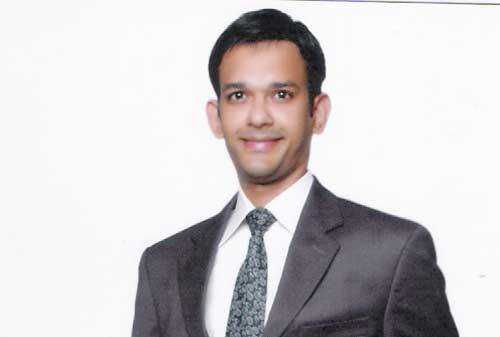
Peshawar, September 10
A 31-year-old Indian prisoner, sentenced by a military court here for possessing a fake Pakistani identity card, has been shifted to a separate cell after he was attacked thrice by fellow inmates.Hamid Nehal Ansari, a Mumbai resident arrested in 2012 for illegally entering Pakistan from Afghanistan reportedly to meet a girl he had befriended online, was shifted last month by prison authorities after receiving direction from Peshawar High Court to adopt security measures for protecting him.A division bench comprising Justice Musarrat Hilali and Justice Qalandar Ali Khan on August 4 had directed Prison Superintendent Masoodur Rehman to hold a meeting with human rights activist Rakhshanda Naz and find a solution for safety and security of Ansari, The Nation reported.Ansari was attacked and injured three times over the last couple of months and shifted to the hospital for treatment, the counsel added.He said even the head warden would subject him to brutality and slap him on a daily basis without any reason.Anwar said that Ansari lodged a complaint about this with the superintendent.Superintendent of the prison Masoodur Rehman confirmed the incidents but insisted they’re of minor nature and that such incidents did happen in prisons.Rehman also told the bench that Ansari, who was serving three years jail term, had been kept in the death cell.Ansari had gone missing after he was taken into custody by intelligence agencies and local police in Kohat in 2012 and finally in reply to a habeas corpus petition filed by his mother, Fauzia Ansari, the high court was informed on January 13 that he was in custody of the Pakistan Army and was being tried by a military court.He was convicted by the military court for possessing a fake Pakistani identity card and sentenced to three years imprisonment. — PTI
Lahore, September 2
Lawmakers in Pakistan’s Punjab Assembly have condemned Defence Minister Manohar Parrikar’s recent statement that “going to Pakistan is like going to hell” and asked the government to summon the Indian ambassador to record a strong protest over it.Speaking on the point of order in the Assembly, treasury member Ramesh Singh Arora said Parrikar’s statement was “regrettable”.“India has not only committed atrocities against Kashmiris for demanding their right to franchise but is also accusing Islamabad of fomenting violence in Kashmir,” he said, adding, “The propaganda against Pakistan must be checked.Arora and other members of the Assembly demanded that the Foreign Office summon the Indian ambassador to record a strong protest against Parrikar’s statement.A number of other members both from treasury and opposition also criticised India for the violence in Kashmir and supported the Kashmiris’ right to self-determination during the yesterday’s session.Parliamentary secretary Rana Arshad told the House that Prime Minister Nawaz Sharif had formed a committee of parliamentarians to raise the Kashmir issue at international forums.Earlier, the Pakistan Sikh Gurdwara Prabandhak Committee Committee members had also condemned Parrikar’s statement and demanded that he should apologise for hurting the sentiments of Pakistanis. — PTIMembers mulls inviting Arundhati RoyPakistan’s Punjab Assembly member Sheikh Allauddin has suggested to invite novelist and human rights activist Arundhati Roy to brief the lawmakers on violence in the Kashmir Valley.Minister Raja Ashfaq Sarwar appreciated the suggestion and drew attention of the House towards its legal and diplomatic aspects.“The Foreign Office may be approached in this respect and the next step should be taken in the light of its advice on invitation to Roy to visit Pakistan especially the Punjab Assembly,” Sarwar said
Vijay Mohan
Tribune News Service
Chandigarh, September 2
The operationally crucial Western Command continues to function under an ad hoc arrangement over a month after the last General Officer Commanding-in-Chief retired, a situation described in some quarters as unprecedented and intriguing.Lt Gen Ashok Ambre, General Officer Commanding (GOC) of the Yol-based 9 Corps was today named the new officiating Western Army Commander after Lt Gen JS Cheema, GOC 11 Corps, Jalandhar, who was appointed as the officiating Commander when Lt Gen KJ Singh retired on August 31, moved to Army Headquarters as the Director General (Infantry).Lt Gen BS Sahrawat, a December 1980-batch officer from the Kumaon Regiment who was earlier serving as Director General (Land, Works and Environment) at Army Headquarters, took over as the GOC 11 Corps today.Lt Gen Ambre is the senior most of the three corps commander in the Western Command. Army sources said the orders for the appointment of a regular Army Commander are expected to be issued soon.Two Lieutenant Generals — DR Soni, an Armoured Corps Officer who commanded Bathinda-based 10 Corps and Surinder Singh, a Mechanised Infantry (Guards) Officer who commanded 33 Corps in Silliguri — are slated to be elevated as Army Commanders. Lt Gen Soni, the senior of the two, is tipped for taking over as the GOC-in-C, Army Training Command at Shimla, a post which fell vacant on September 1.Lt Gen Surinder is tipped for heading the Western Command at Chandimandir. Pending their new appointments, both officers are at present attached to different formations after having completed their tenures as Corps Commanders. Lt Gen Soni had relinquished charge as Corps Commander in June end, while Lt Gen Surinder Singh moved out from Silliguri last week.
Lt Gen Raj Kadyan (retd)
In the context of Kashmir, the gun is not the cause of the problem. Therefore, it cannot also be the solution. To that extent, the debate and focus on pellet guns becomes secondary.
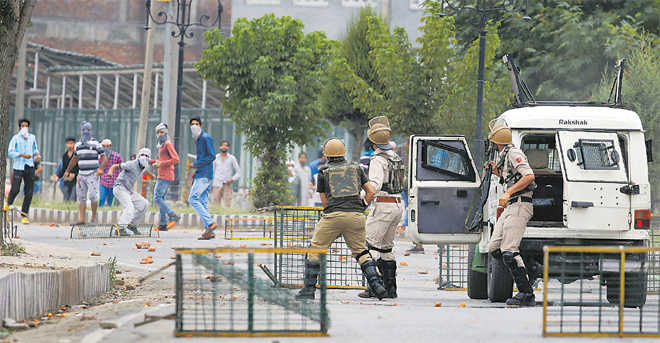
The Kashmir Valley has been simmering for over seven weeks. Related debates have of late centred around the use of pellet guns. Their use in J&K was started after 2010, when to control the stone throwing crowds the security forces used conventional weapons and rubber bullets, resulting in over 100 fatalities. It was hoped that the non-lethal pellet guns would minimise the damage.Cartridges are loaded with lead pellets, which are dispersed when fired. They don’t follow a definite path. They are, in military terms, area weapons. Pellets penetrate the skin’s soft tissues. Eye being a delicate structure is particularly vulnerable. There is no merit in allegations that the security forces deliberately targeted the faces. Apart from the uncontrolled path of the pellets, not everyone in the crowd that is throwing stones is standing upright; some may be bending or crouching. Search is reportedly on for non-lethal alternatives to pellets. An assortment of related technology is available. The crowd control devices span from microwave energy blasters and blinding laser beams to chemical agents and deafening sonic blasters. Today, with greater presence of the media, even the lawful application of force can be misrepresented or misunderstood. This puts extra cautionary restraint on the security forces in using their weapons.Some of the current developments in this field need mention:Invisible pain ray: It is akin to an open-air microwave oven, sending out a focused beam of electromagnetic radiation to the target. The nearly 130 degrees F temperature it generates causes burning sensation, forcing those in its path to flee. However, the device produces second and third-degree burns and its 2-metre diameter beam covers the entire human body surface and may be life threatening.Laser blinding dazzler: This is a huge laser. It temporarily blinds or dazzles the target, causing disorientation. The risk of permanent blindness yet requires further experimentation to gain a full understanding of its safety, effectiveness, and limitations.TaserX12: It fires a Taser projectile round from a 12-bore gun. It delivers the same neuro-muscular incapacitation bio-effect (simply put, an electric shock) up to 100 feet. Semi-automatic fire is part of its future development, which will permit reload of up to five rounds in less than two seconds. Another project of Taser aims at “blanketing a large area with electrified darts, and a wireless Taser projectile with a 100-metre range, helpful in picking off ringleaders in unruly crowds”. However, Amnesty International has flagged that 351 Taser-related deaths occurred in the US between June 2001 and August 2008.Then, there are calmative agents, implying “chemical or biological agents with sedative, sleep-inducing or similar psychoactive effects” for controlling a riot or calming a noncompliant offender. The most well-known and widely used riot-control agent is teargas. Further development and use of non-lethal calmative techniques is considered achievable.Research is continuing in developing “screaming microwaves that pierce the skull”. These cause a shockwave inside the skull that can be detected by the ears. The audio effect is loud enough to cause discomfort or even incapacitation. It may also cause a little brain damage from the high-intensity shockwave created by the microwave pulse.Ear-splitting siren: This is generally used to drive away protesters. While it is not deadly, it can cause permanent hearing damage. In this line, an Israeli-developed shock wave cannon, being commonly used by farmers to scare away crop destroying birds, is likely to be marketed in its military and security versions.In sum, it needs to be remembered that no gun, non-lethal or less-lethal, can ever be fully harmless. A gun essentially is a weapon and violence is inherent in its use. If it has to achieve deterrence or coercion in controlling a mob, pain or discomfort has to be inflicted. Security forces may use low-lethality weapons relatively more often.Besides, all these weapons are designed for controlling an unarmed crowd. A mob that is involved in pelting stones and in attacking security personnel with petrol bombs, and even firearms, creates a different situation.In the context of the Valley, the gun is not the cause of the problem. Therefore, it cannot also be the solution. To that extent, the debate and focus on pellet guns becomes secondary. At best it conveys a sincere desire to avoid civilian casualties. The focus should be on creating conditions where such situations do not arise.The problem is complex; a mix of political, religious, economic, social and psychological factors is involved. There is a sense of alienation that needs to be addressed. Burhan Wani’s killing is not the main cause of the present unrest. It only provided a spark for explosion of the simmering anger. If not the July 8 killing of Wani, some other pretext would have caused it.Then, there is Pakistan’s continuing interference in J&K. Mehbooba Mufti, after her meeting with the Prime Minister on August 27, minced no words in accusing Pakistan. India is not new to separatist problems. We have encountered these in the North-East. Nagaland was the first to seek independence in the 1950s. Mizoram followed a decade later. The problem in Mizoram was fully resolved in the 1980s. The Naga problem is well on its way to resolution. In any case, breaking away from India is no longer their demand. If the problem in J&K is still lingering, it is because of Pakistan’s active involvement. Their support is not limited to moral, diplomatic and political levels, as Nawaz Sharif claimed some days back. It extends way beyond — to providing weapons, explosives, money, training and, of course, sending in jehadis. Seeing strident Pak pronouncements, no let-up is likely in the near future. The only way to deter Pakistan is to convince them that they would have to pay a price. This could be in political, diplomatic, economic or even military terms. The writer is a former Deputy Chief of Army Staff.
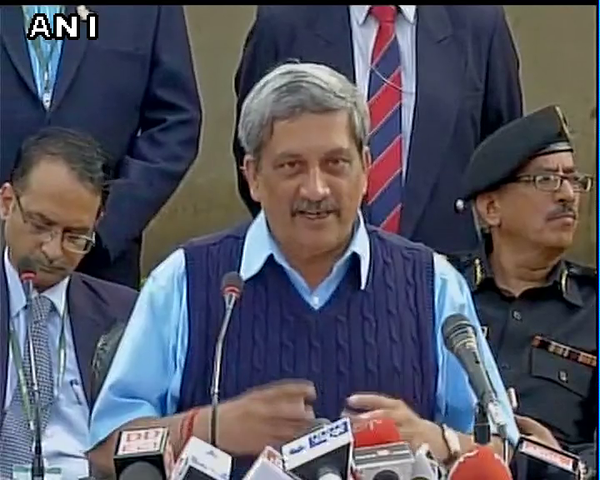
The US has designated India as a major defence partner. ANI
Washington, August 27
Defence Secretary Ashton Carter would host his Indian counterpart Manohar Parrikar at the Pentagon on Monday, weeks after India was designated as a major defence partner by the US.The Pentagon on Friay said Carter would host an enhanced honour cordon to welcome Parrikar to the US Defence Department headquarters. Following the arrival ceremony there will be a wreath-laying ceremony at the Pentagon 9/11 Memorial.After the ceremony there will be a bilateral meeting, followed by a joint press conference at the Pentagon, a statement said.
(Follow The Tribune on Facebook; and Twitter @thetribunechd)
“This will be Carter’s sixth meeting with Parrikar, and comes just weeks after India was designated a major defence partner of the United States during Prime Minister Narendra Modi’s June visit to Washington,” the Pentagon said.Carter had met Parrikar during a visit to India in April.The India-US Defence partnership has been the most ambitious one over the past several years, a senior State Department official told a group of South Asian reporters on Friday.“During the Prime Minister’s last visit we were able to announce that the logistic agreements have been finalised, so we look forward to being able to sign that in the near future whether or not if that is going to be part of minister’s visit or not,” the official said.“We are certainly welcoming and hopeful for continuing to move forward on that and continuing to move forward on the fact that we have designated India as a major defence partner and continue to progress in that direction,” the official added. PTI
Chief Minister Mehbooba Mufti delivered some home truths about the prevailing volatile situation in Kashmir at a joint press conference with Union Home Minister Rajnath Singh in Srinagar on Thursday. Candidly, she said the boys engaged in stone-throwing protests were not on a toffee-or-milk-buying spree. They had attacked Army camps with stones and petrol bombs, and that had consequences. The children and adolescents of impressionable age, already angry with the system, are being instigated by calls for jihad and martyrdom from loudspeakers at mosques. The overwhelming presence of security forces fuels their rage. The instigators use the young as shields during attacks on Army camps. The larger reprehensible objective is to showcase Kashmir as a dispute for the resolution of which young Kashmiris are laying down their lives. It also helps them draw international attention. Anyone showing them the mirror is, therefore, viewed as an enemy.The most contentious was Mehbooba Mufti’s remark that only 5 per cent troublemakers had held as hostage the remaining 95 per cent Kashmiris who also wanted a solution but through a peaceful process. She should have known that the press conference being held in a high-voltage situation wouldn’t be a smooth affair. Her agenda of peaceful and political solution, she should have anticipated, would be an anathema to those engaged in a violent hate campaign ever since the PDP entered into an alliance with the BJP to form a government in March last year. Her outburst diverted the attention from Rajnath Singh’s positive announcements of withdrawal of pellet guns and a dialogue offer to all to the Chief Minister’s temperament trouble. Understandably, during a crisis a leader is under pressure. But she should not have allowed this to disturb her calm, especially when a delicate peace process was at stake. Had she followed her father, Mufti Mohammad Sayeed’s footsteps, she would have drawn the comparison between 2010 and 2016 with a cool head and disarming words. Mehbooba Mufti herself is an unrelenting advocate of dialogue and a political solution to the Kashmir crisis. Her angry utterances drowned the import of the larger message.





















